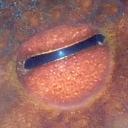Yahoo Answers is shutting down on 4 May 2021 (Eastern Time) and the Yahoo Answers website is now in read-only mode. There will be no changes to other Yahoo properties or services, or your Yahoo account. You can find more information about the Yahoo Answers shutdown and how to download your data on this help page.
Is it true that the ISO sensitivities of the photographic films cannot be changed like the digital cameras ?
10 Answers
- Uncle PennybagsLv 74 weeks ago
Correct.
An ISO 400 film is an ISO 400 film. The cannot be changed to ISO 100 or ISO 800.
That being said, photographers can "push" the film during development, adjusting the developing time and somewhat compensate for that. But that would be considered an "expert" technique.
- ?Lv 61 month ago
It cannot be changed by any of the camera settings. The base ISO allows us to compare different camera models in a useful way in terms of their light sensitivity, should we even want to do that. ... In the case of film, the ISO number really does tell you the light sensitivity of the film in some standard way.
Source(s): https://iqheets.ae/ - RobsteriarkLv 71 month ago
Not entirely true.
Kodak T-MAX 3200 is actually sold as a multispeed film. However, once you have chosen a particular speed you are not free to change it unlike on digital cameras. But it does have enormous latitude once you include the printing stage.
It’s true nominal speed is ISO800 to ISO1000 but it is specifically designed to be push processed just to achieve its usual default ISO3200 rating.
The DX-coding is for ISO3200, and Kodak advise that it has a suggested speed range of ISO1600 to ISO25000.
Using the right techniques it can be pushed considerably more than that.
- garryLv 61 month ago
films cant change the iso , just the shutter speed , digitals can , electronicly , still knows the digital camera cant make as good a picture as a film does .
- keerokLv 71 month ago
Yes, it's true, you can't change the ISO of a film but you can adjust the ISO setting of the camera. You just have to consider that though when you process the film so you can adjust developing times accordingly.
- Martin SLv 71 month ago
No, you can't change the ISO of a film per se. But you can over and underexpose and compensate when developing (it's called pulling and pushing). Using tripods is often called for in film photography. So for most things there is a solution.
- spacemissingLv 71 month ago
Any specific film has a fixed sensitivity that is "built in"
because of the size of the silver nitrate particles.
Plainly, that cannot be changed by any means.
It is possible to use film at an incorrect setting,
such as "pushing" ISO 400 to 800,
as long as that is taken into account when the film is developed.
- micksmixxxLv 71 month ago
You can't actually change the ISO sensitivities on photographic film, my friend, but film cameras DO allow you to change ISO settings. In effect, this means that you're either under- or over-exposing the film, so this would need to be taken into account during the development process. i.e. you need to inform whomever is carrying out your film processing what you've done or their machines will see that it's over- or under-exposed and try to 'put it right'.
- SumiLv 71 month ago
Yes, a roll of film has one, and only one, ISO. By this I mean once you start using a roll of film at a specific ISO/ASA, you can't change the ISO on your camera. However, you can push or pull film. Pushing film is when you set the ISO higher than indicated and then over develop to compensate. Pulling is when you shoot the film at a lower ISO and then under develop the film.
As you can imagine, having to stick to one ISO/AA can be problematic, especially when you have a low ISO film in a dark area or vise versa.
To solve the problem of having the wrong ISO for the situation, one can simply rewind the film back into the canister, mark the can with the frame number and then use a different film type. When it's time to use the partially-exposed film, simply load it, and with the lens cap on, a fast shutter speed and the smallest aperture advance the film one frame past the number where you left off. I used to do this all the time when I shot film. Fortunately, my camera had the ability to rewind the film and leave the leader out, otherwise I'd have to use a film leader retriever.
Those who use medium format cameras like a Mamiya, Hasselblad, etc... were lucky in that these cameras used film backs that could be removed and exchanged with another back. This allowed the user to use any ISO and/or film type at any time.
Similarly, large format cameras use removable film holders that hold two sheets of film.
UPDATE: Why there are thumbs down on this answer is beyond me. I have many decades of experience doing exactly what I've written, so I know it to be empirical fact.








